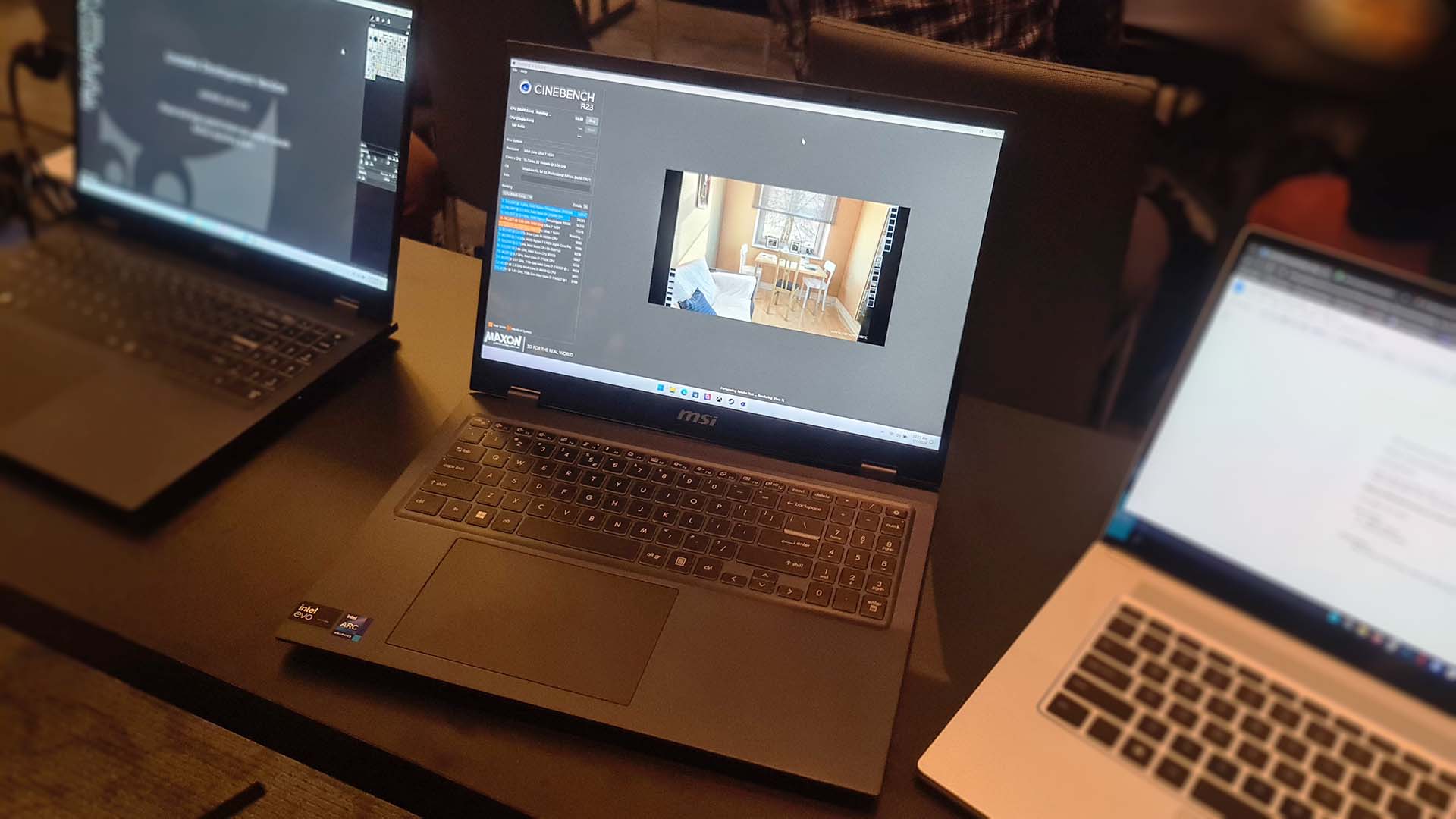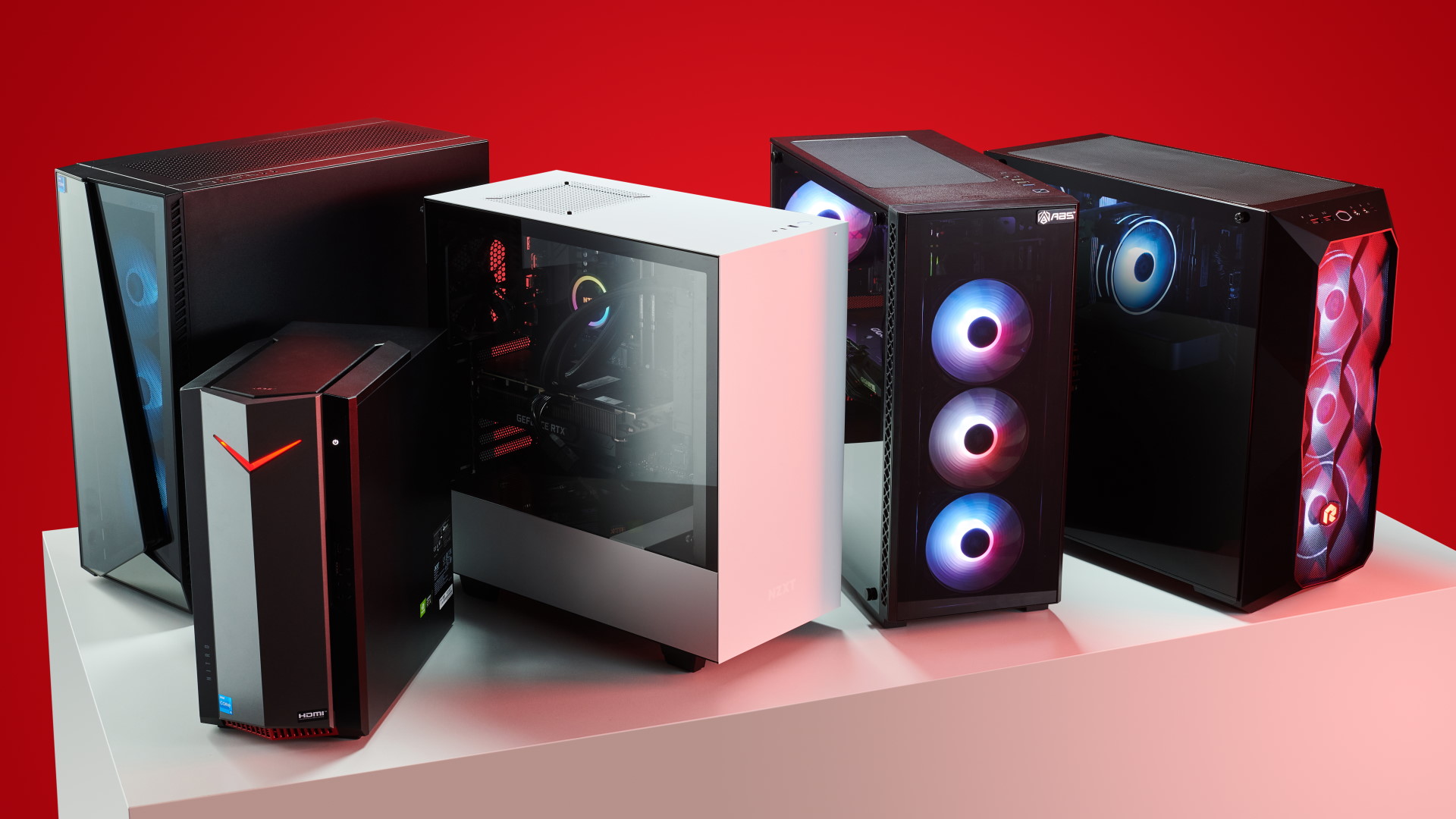Hands on: Intel's Core Ultra 7 165H is golden for gaming, if you can turn on XeSS, and mostly playable without
I've had some time to tinker with Intel's Meteor Lake processor inside MSI's Prestige 16 laptop, and it's a reasonable gaming chip if you don't expect too much out of it.

Over at CES 2024 I was handed a couple hours to do with as I pleased with an MSI Prestige 16 laptop. On the surface, that might not sound too exciting for a PC gamer, as the Prestige line isn't explicitly built for gaming, but this laptop had inside it Intel's latest Core Ultra 165H processor. That's a 55W version of Meteor Lake with six P-cores, eight E-cores, two Low Power E-cores, and eight Xe-cores—a whole lot for a small mobile chip.
Give me some time with a new chip and I'm going to reach for some games to play on it. Let's start with the best gaming performance I experienced. While I was installing another game on my machine, a fellow journalist let me dive in on Shadow of the Tomb Raider on theirs. Initial impressions were very good for a mobile iGPU.
On SotTR's lowest graphics setting, and with XeSS on balanced, we were seeing performance of 71fps on average and 60fps minimum at 1080p. I know that sounds like Child's play to a discrete GPU, but I'm writing this from a NUC 15 laptop I've been using for a couple of years now, fitted with a Tiger Lake generation mobile processor, and it's not a pleasant experience for gaming. By comparison, in SotTR, the Core Ultra 7 165H put on a pretty good show.
You can tweak the settings a bit more to favour graphics quality. Turn XeSS up to Performance mode and set the game to Medium and you're looking at 56fps on average and 43fps minimum.
We ran a couple other benchmarks covering various combinations. Here are the results:
| Row 0 - Cell 0 | Average (fps) | Minimum (fps) |
| Lowest | XeSS: Balanced | 71 | 60 |
| Medium | XeSS: Balanced | 51 | 40 |
| Medium | XeSS: disabled | 41 | 32 |
| Medium | XeSS: Performance | 56 | 43 |
On the flipside, you will have to lower your expectations if you venture on without XeSS. In SotTR we only just scraped 30fps at a minimum with it disabled. I also ran Horizon Zero Dawn on my machine on the medium preset at 1080p and found I was reaching only 38fps on average, with 1% low of 30. That's not the entire picture, either, as that ignores the fairly obvious hangs that occurred at various points during the benchmark run.
It wasn't entirely pleasant to play the game on the iGPU alone here.
Keep up to date with the most important stories and the best deals, as picked by the PC Gamer team.
The key is XeSS, or some form of upscaling (AMD's widely supported FSR will suffice). That was pretty clear from my first experience with gaming on Meteor Lake at the tail-end of last year, but this time to experiment further with the Arc GPU tile has just reinforced that belief for me.
Still, if you're looking at this as not a replacement for a gaming laptop, but instead as an added benefit to a laptop you might be using for work or school, that's where I think it could shine. Personally, I only stretch the laptop I use for work (not a gaming laptop) to play Crusader Kings 3, and it's pretty bad at it. I don't believe the 165H would struggle anywhere near as much.
Here are the figures from a couple of the other benchmarks I ran on the Meteor Lake machine:
| Max P-core clock (recorded) | 5GHz |
| Max package power | 67W |
| Max package temperature | 110 degrees Celsius |
| Time Spy (GPU/CPU) | 3365/10600 |
| Time Spy Extreme (GPU/CPU) | 1403/5503 |
| Horizon Zero Dawn (avg/min) | 38/30 fps |
As you can see, this chip got pretty hot. It also did gobble up a bit more power than that PL1 limit, but that's the nature of Intel's PL1/PL2 limits on mobile. It will bounce up above PL1 for a set period of time. While this might not pose such an issue on some chunkier laptops that can handle the chip, more compact laptops need to rein in the power limits to try to stay on top of thermals. Intel calls the former 'Max Performance' and the latter 'Max Portability'. I've got a Asus Zenbook 14 here with the Ultra Core 7 155H in it that is only rated to run at the base power value of 28W. I'll be testing this thin and light machine in the coming weeks to see how well it can deal with gaming, considering it's so much slimmer than the MSI.
What's sure to be important for both the MSI and the Asus is how much memory is available to the iGPU to use. It shares a memory pool with the entire system, and that means the more RAM available, the better. Both of these machines have 32GB, and I would imagine that any less might start to impact performance. At 8GB it would be extremely weak, but that little memory sucks for a whole many reasons, and Intel has set 16GB as the minimum requirement for any manufacturer putting an Arc graphics badge on their laptop.

Best gaming PC: The top pre-built machines.
Best gaming laptop: Great devices for mobile gaming.
In the configuration I experimented with from MSI, I do think Meteor Lake delivers workable gaming performance. You have to still make sacrifices for this sort of iGPU, that's for sure, but as we've seen from the growing gaming handheld market sometimes that's accepted for gaming on-the-go. You can certainly get respectable frame rates out of an office laptop with a Core Ultra chip inside it, and yeah, for someone that's often caught with time to kill but only a work laptop at hand that could be pretty useful. Similarly, alongside a discrete GPU, there's the added flexibility of being able to save some battery and run off the iGPU when the game allows it.
I'll have to get back to you with battery life figures, as our allotted hands-on time wasn't long enough to test performance from the wall and run this sucker's battery down.
The key battle for Intel will be versus AMD's current 7040-series and its future 8040-series chips. My benchmarking numbers from Time Spy Extreme suggest that Intel does take the lead in GPU performance versus the Ryzen 9 7940HS. I'm going off older figures from a Razer Blade 14 review (GPU score: 1,152) and more recent ones for the latest Framework 13 (GPU score: 1,164) both running AMD's top 780M integrated graphics silicon.
Hopefully Intel's drivers allow to take advantage of whatever lead it may have in gaming performance, as AMD remains solid in that department and Arc's graphic drivers are still a WIP.

Jacob earned his first byline writing for his own tech blog. From there, he graduated to professionally breaking things as hardware writer at PCGamesN, and would go on to run the team as hardware editor. He joined PC Gamer's top staff as senior hardware editor before becoming managing editor of the hardware team, and you'll now find him reporting on the latest developments in the technology and gaming industries and testing the newest PC components.

